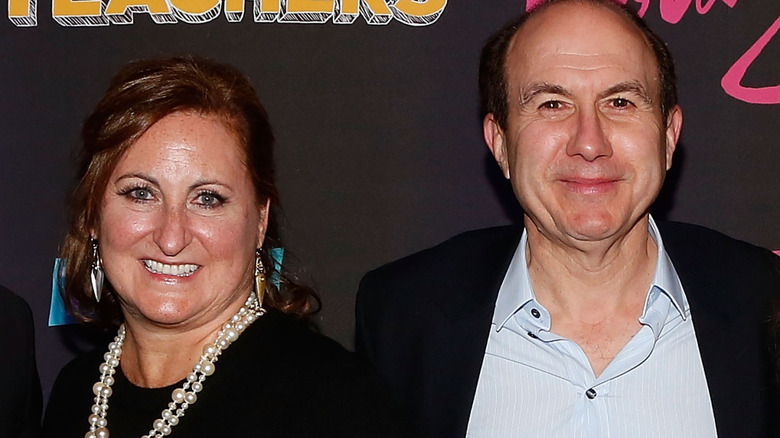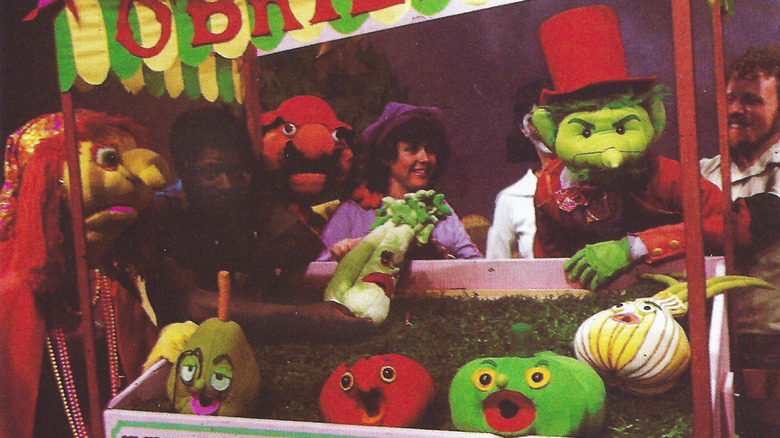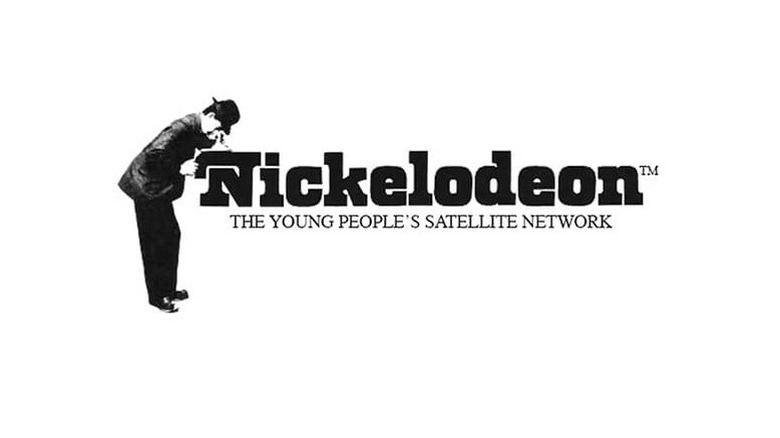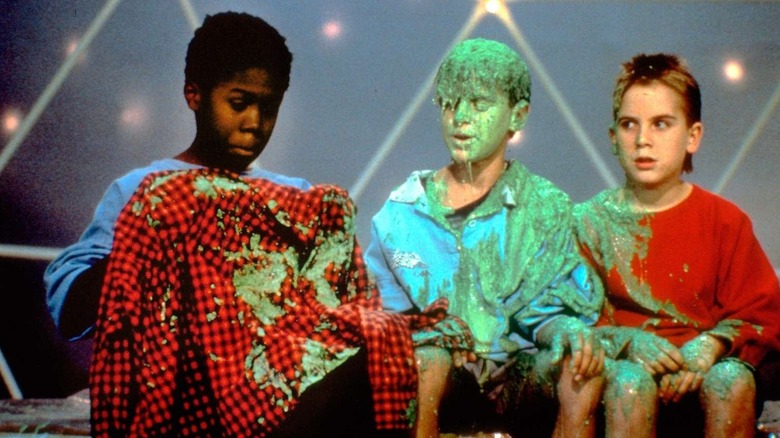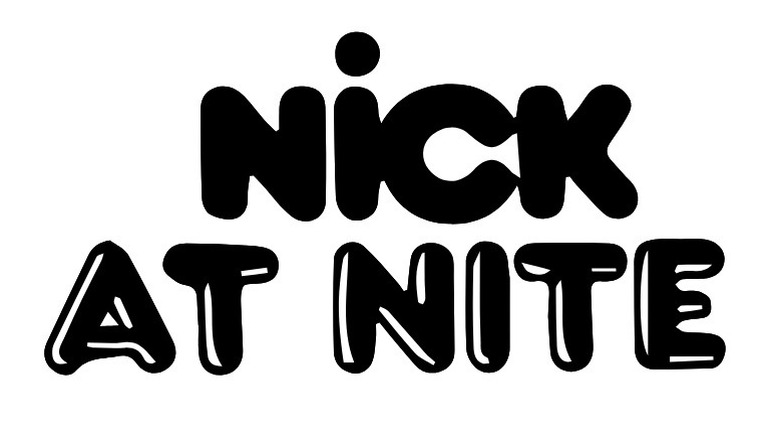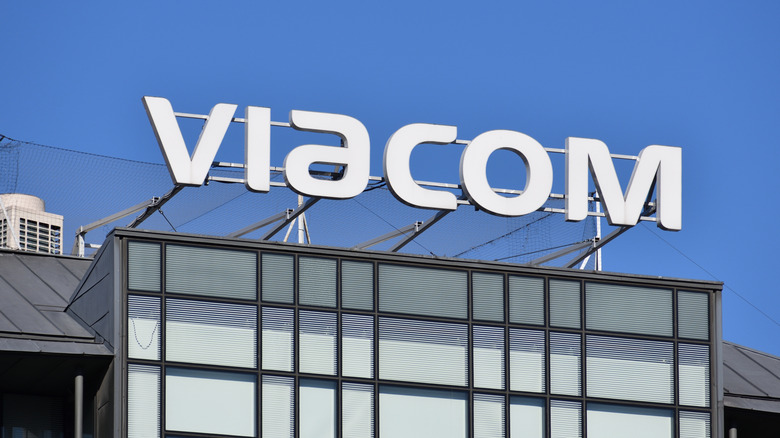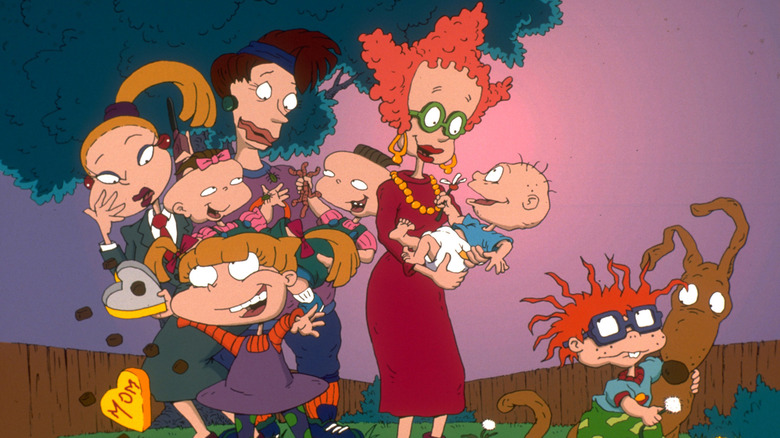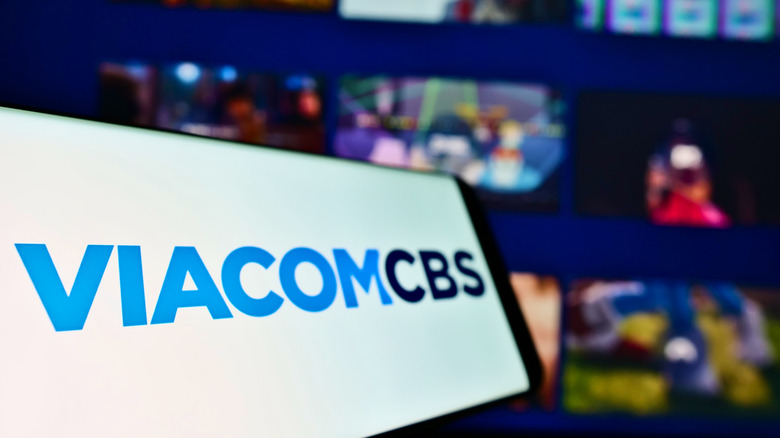Who Created Nickelodeon?
Nickelodeon has been a TV staple for several generations, and it has a very interesting origin story. Since its inception, it's passed through the hands of many owners, but it all began with one person. The network (which was named after turn of the century indoor exhibition spaces that showed motion pictures for a nickel) was conceived of by an educator who wanted to create a cable network aimed at children. From that small seed grew a behemoth of a network that's responsible for some of the best cartoons and children's shows of all time. How did a humble idea become a cultural phenomenon that helped raise untold numbers of children? And just who created Nickelodeon, anyway? Read on for all the details.
Nickelodeon's roots can be traced back to an early cable system called QUBE
Nickelodeon was conceived back in the 1970s by educator and researcher Dr. Vivian Horner, who was working as the director of research on the PBS series "The Electric Company" at the time. In 1977, Horner created what is technically the first ever Nickelodeon show: "Pinwheel." The series was set in a pinwheel-powered Victorian boarding house inhabited by a mixture of puppets and humans, who performed skits and songs aimed at pre-school audiences. "Pinwheel" first aired on the Ohio-based early cable system QUBE, which offered 10 different channels, one of which played nothing but "Pinwheel." It became so successful that Horner began to plot a dedicated channel on national TV.
On April 1, 1979, Nickelodeon officially set sail on Warner Cable franchises, with "Pinwheel" as its first ever show. It launched with the tagline: "At Last. Children's Programming That's Fit For Children." Speaking to The New York Times a few weeks before the launch, Horner explained what made Nickelodeon so revolutionary. "This doesn't look at all like television fare," she said. "The pace is different, slower, gentler. There is none of the bang‐bang‐bang that the commercial people think necessary to catch and hold attention. The programming is made up of varied materials of varying lengths, so that none of it begins or ends on the hour. I think of it as an electronic sandbox the kids can come to whenever they wish."
Who came up with the name Nickelodeon?
While Dr. Vivian Horner was the executive producer of "Pinwheel," she had a lot of help from a woman named Sandy Kavanaugh. Not only was Kavanaugh a producer on "Pinwheel," but she also went on to become Nickelodeon's first director of programming. When she was interviewed for the 2013 book "Slimed! An Oral History of Nickelodeon's Golden Age," Kavanaugh revealed that she was the one who came up with the name of the now iconic network.
"The name of the network had come from Vivian Horner wanting me to come up with a list of possibilities," Kavanaugh said. "Everybody was suffering over what to call it. I came up with a list and Nickelodeon was my favorite. A lot of the other names we came up with were bad... I wasn't thrilled with 'Nickelodeon.' It was whimsical sounding, though. It had a fun lilt."
According to Joe Iozzi, who was a creative consultant at the advertising agency tasked with creating Nickelodeon's branding, Kavanaugh wasn't the only person asked to come up with potential names for the network. "We gave the client about 150 names to choose from," Iozzi told the Classic Nickelodeon Fan Blog. "A couple of rejected names were The Savoy Channel and The Rainbow Network." Iozzi agreed that Kavanaugh's suggestion had a nice ring to it. "The sound of the word was nice and rolled off the tongue easily," he added.
Iozzi is the man behind the first ever Nickelodeon logo, which features "a turn of the century man in a bowler hat peering into a Nickelodeon machine with his arm ready to crank the machine," he explained. Interestingly, this wasn't intended as the final design. The man in the bowler hat was supposed to be "a small boy, tip-toed on a train stool with an English cap peering into the Nickelodeon. We were always pressed for time and I never got around to revising the original logo as I planned."
The 1980s saw Nickelodeon change its focus from education to entertainment
1981 brought about Nickelodeon's first big hit and its first claim on the pop culture consciousness: It began airing the Canadian series "You Can't Do That on Television." Crude and loaded to the gills with bathroom humor, its fondness for pouring green-dyed oatmeal on the head of any kid unfortunate enough to utter the phrase "I don't know" ended up giving Nickelodeon its own unique identity. The show's green slime quickly became an essential component of the network's branding from there on out. Nickelodeon would always broadcast educational programs, but its identity was changing. Dr. Vivian Horner left the network in 1983, and a new era followed. Nickelodeon began combining educational programs with even more entertainment-centered ones under the stewardship of Geraldine Laybourne.
Part of Laybourne's strategy was to target older kids. "Our initial success was with pre-schoolers, where the adults control the dial," Laybourne told The New York Times in 1984. "Kids started to say that Nickelodeon is not a 'baby channel' and we've moved much more in that direction within the past few seasons. The 8- to 12-year-olds are really our focus now." According to Horner, the network wouldn't have become such a juggernaut in children's entertainment without Laybourne. "Her Nickelodeon has an attitude, like Angelica from 'Rugrats,'" the founder once said (via Forbes). "I appreciate it, but I like softer programming myself. I'm a bit old-fashioned. I'm not sure if I could have made Nickelodeon such a big hit."
A major rebranding took place in the mid-80s
Nickelodeon's increased focus on entertainment over education wasn't the only big change afoot around this time. The network was under the control of Warner-Amex at this point (American Express had previously struck a deal to purchase 50% of Warner Cable), as was MTV. Moving to divest its assets, Warner-Amex created a new subsidiary under the name MTV Networks, and this became the new home of Nickelodeon.
A major rebranding took place in 1984, one that included the first appearance of Nickelodeon's now-iconic splat logo. With programs like "Double Dare," "You Can't Do That on Television," and "Mr. Wizard's World" bringing in a host of kids from the very young to the nearly-old-enough-for-MTV, the network's fortunes turned around. It also began broadcasting commercials in 1984, a then-controversial move that was later adopted by other kiddie-friendly networks.
It wasn't long before Nick at Nite was born. Nickelodeon initially gave its evening airspace over to The Star Network, which became The Movie Channel. When the decision was made to make The Movie Channel its own 24-hour channel, the void was filled by the arts-centric Alpha Repertory Television Service. That eventually became the A&E Network, and it would also spawn its own specialized network. Nickelodeon was once again left searching for a way to fill up its nighttime programming block.
The idea of leasing episodes of old television shows and jazzing them up with bumpers, commercials, and promotional gimmicks was conceived by MTV media branding gurus Fred Seibert and Alan Goodman. Nick at Nite came into existence on July 1, 1985, becoming a popular programming destination that continues to air to this day. With its launch, the network was suddenly a hip place to be for both kids and their parents.
Viacom takes the reins
In 1985, Warner Communications Inc. decided to buy back the 50% stake it had sold to American Express back in 1979. The MTV Networks company had recently gone public, and there was change afoot. It was soon revealed that 31% of the company was being sold to Viacom, and that was just the beginning — Viacom bosses wanted the remaining 69%, and by March 1986, they had their wish. The Viacom sale heralded a huge boom period for Nickelodeon that would last for decades. The Nickelodeon Kids' Choice Awards launched in 1988, and by then the channel's morning block of programming — aimed at young children — was transformed into Nick Jr.
The network now had a winning formula: Programming aimed at young children would air from six in the morning until roughly two in the afternoon, then shows aimed at families and older kids would begin to air. At 9:00PM, Nick at Nite would take over. In 1989, Geraldine Laybourne was rewarded for her part in the network's meteoric rise when she was promoted to the position of Nickelodeon president. With its revolutionary leader tied down and a homerun lineup under its belt, Nickelodeon opened Nickelodeon Studios at Universal Studios in Florida in 1990. There, it would launch its first scripted programming and begin to expand its reach into the movie market.
Nicktoons and the golden age of Nickelodeon
The golden age of Nickelodeon began in earnest in 1991 with the creation of the three original Nicktoons: "Doug," "Rugrats," and "The Ren & Stimpy Show," some of the best Nickelodeon shows of all time. Creating its own cartoons was something the network had shied away from in the past due to high production costs, but it was seen as a calculated risk at this point, and it ultimately paid off, with all three shows becoming hits. Nicktoons was the brainchild of Vanessa Coffey, the Nickelodeon executive who had been tasked with making the network's dream of producing original cartoons a reality.
"I basically just started hunting," Coffey told Entertainment Weekly. "I put the word out to animators: 'I'm looking for ideas, I'm looking for concepts. The less developed, the better. I want drawings, not a big pitch.' Nickelodeon gave me an hour and a half that we were going to fill as a block. My idea — and Nickelodeon's consensus — was to go find whatever you want. I didn't want a consistent look like Disney. I specifically wanted and was desperate to have three projects that looked completely different."
It wasn't long before live-action shows were being greenlit ("Clarissa Explains It All" became the flagship series on SNICK, the network's primetime block), and big screen ventures soon followed. In 1996, Nickelodeon entered the movie game with an adaptation of Louise Fitzhugh's novel "Harriet the Spy" starring Michelle Trachtenberg and Rosie O'Donnell. "The Rugrats Movie" (which contained some things only adults noticed) and "Doug's 1st Movie" came out in 1998 and 1999, respectively, bringing the decade full circle.
Viacom and CBS split up, leaving Nickelodeon on the ropes
With the new millennium approaching, Nickelodeon debuted what is arguably the most iconic show in the network's history: "SpongeBob SquarePants." The first episode of "SpongeBob" aired on May 1, 1999, a landmark date for Nickelodeon. A few months later, another big event occurred: The highly publicized merger of Nickelodeon owner Viacom and CBS. "When Viacom's Sumner Redstone and then-CBS president and CEO Mel Karmazin revealed the plan at a Sept. 7, 1999, press conference, the combined Viacom/CBS empire was valued at $80 billion," Variety reported. "That original merger would ultimately only last five years, as Redstone moved to split Viacom and CBS back into separate companies in 2005."
The first hint that Nickelodeon might suffer as a consequence of this split came when Nickelodeon Studios closed down in 2005. In January of the following year, then-president Herb Scannell stepped down and was replaced by Cyma Zarghami, who was given the reins of Viacom's newly formed Kids & Family Group (Nickelodeon, Nick at Nite, Nick Jr., TeenNick, and Nicktoons all fell under this banner). Later in 2006, Zarghami negotiated a deal with DreamWorks that would allow Nickelodeon to create TV shows based on the studios movies.
2008's "The Penguins of Madagascar" was the first to hit the airwaves, with "Kung Fu Panda: Legends of Awesomeness" following in 2011. By this point, Nickelodeon's generational dominance of the kids market had begun to tumble dramatically. The decline in ratings was so worrying that Viacom CEO Philippe Dauman ordered an investigation. In 2012, the unthinkable happened: The Disney Channel beat Nickelodeon in the ratings, bringing the network's 17-year streak to an end.
Viacaom and CBS get back together, but Nickelodeon's future is far from certain
In 2018, Cyma Zarghami stepped down as Nickelodeon president after 12 years at the helm and she was replaced by Brian Robbins, a writer and producer who had been plying his trade at Paramount Players prior to this shake up. It was the first step in a big period of change for Nickelodeon: Viacom and CBS merged once again at the end of 2019 to create ViacomCBS (now known as Paramount Global), and Nickelodeon announced that it was ready to get back on top with an all-new, more modern slate.
"We have a laser focus on who kids are today, and what they want, so we are making a wider variety of shows and series for them, and we're working with brand-new kinds of talent and producers," Robbins said (via NickALive!). "We have a new creative team in place and a renewed energy that we're harnessing to bring the buzz back to Nick. Kids today are their own programmers, so we have been working very fast to transfer our expertise as television content makers to all the new places and platforms kids are going to."
The landscape is a lot different now thanks to streaming services, which is why Nickelodeon signed a deal with Netflix in 2019 to create shows based on Nick characters, a way for both companies to compete with Disney+. However, the long-term future of Nickelodeon itself remains uncertain. "The legacy Viacom cable channels like MTV, Comedy Central, Nickelodeon and BET are simply not as high a priority," The Hollywood Reporter said in a 2024 report into the state of the industry.
Nickelodeon became a household name in the world of kids' entertainment by being ahead of the game. It will have to adapt once more to stay relevant in the era of streaming. Can it reinvent itself once more and regain its crown? Only time will tell.
